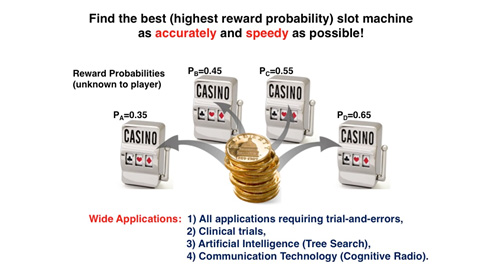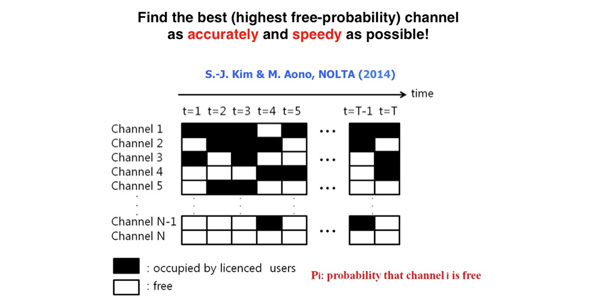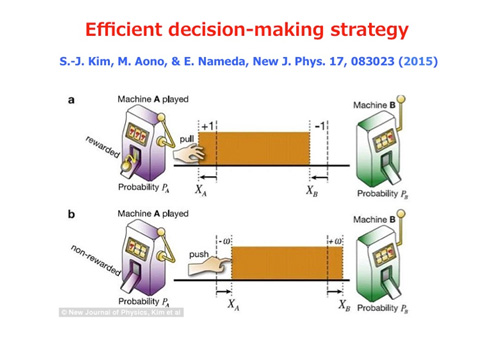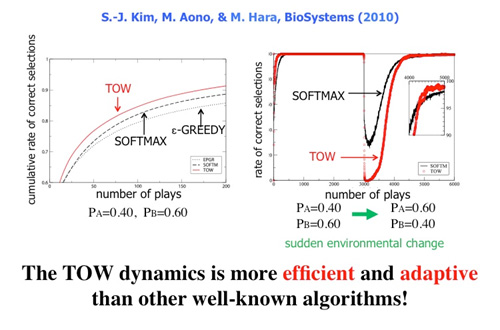Jun. 10, 2016
Efficient Method for Decision-Making Based on Trial and Error
RIKEN No.: 08135
Inventors
Song-Ju Kim, Masashi Aono, Etsushi Nameda, Hara Masahiko (Flucto-Order Functions Research Team)
Background
This technology enables "decision-making" for the selection of preferable things, and can be used for everyday choices to critical decisions in business. Current big data technology makes it possible to statistically analyze past cases and choose options thought to be most effective. However, the information stored in databases is information from the past and thus is not always effective for decisions in the present where unexpected new situations arise. Under these situations, there is a need to go through a process of trial and error efficiently.
Summary
In order to conduct a process of trial and error efficiently, it is important to maintain a balance between focusing on information obtained from past trials and searching for better new options. Through the study of information processing principles used by unicellular organisms, we have discovered that even non-intelligent substances are capable of realizing efficient decision-making as long as they have the property of preserving volume. This method, named the "tug-of-war principle", is found to perform better in terms of efficiency and adaptability than conventional decision-making algorithms.

Fig.1 Multi-Armed Bandit Problem

Fig.2 Cognitive Radio (Application Example)

Fig.3 Tug-of-War Dynamics

Fig.4 Performance Comparison
Merits
- Reduction in Cost and Time for Proper Decision-Making
- Quick Adaptation Even to Situational Changes
- Implementable with Simple Hardware (Physical Device)
Applications
- All Applications Requiring Efficient Trials-And-Errors (Artificial Intelligence, Information and Communications, etc.)
- Clinical Trials
- Radio Communication (Fast Determination of Available Channels)
References
- 1. Japanese patent application No. 2013-066768, PCT/JP2014/001506
- 2. S.-J. Kim, et al., BioSystems 101, 29-36 (2010)
- 3. S.-J. Kim and M. Aono, NOLTA 5, 198-209 (2014)
- 4. S.-J. Kim, et al., New J. Phys. 17, 083023 (2015)
- 5. H. Kato, S.-J. Kim, et al., IEICE Technical Report 115 (284), 45-49 (2015)
